Introduction
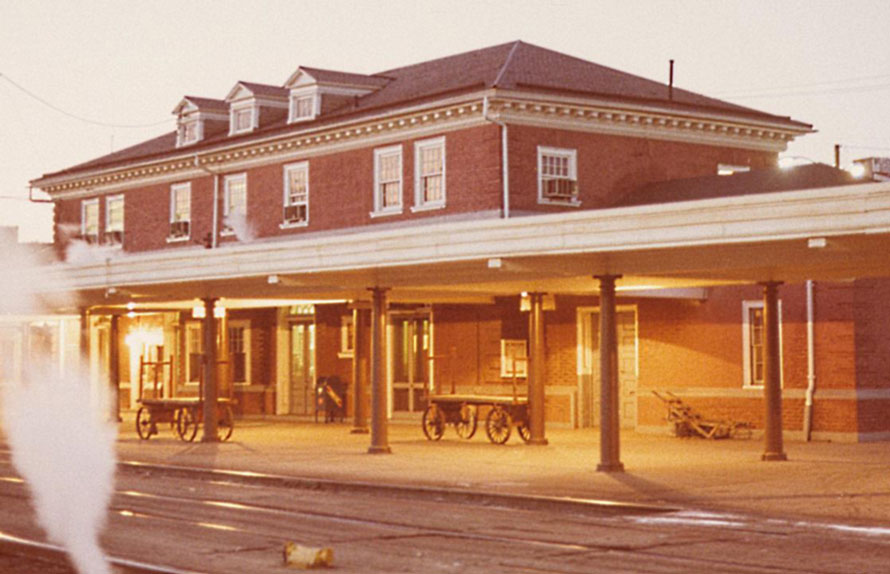
My introduction to a railroad paycheck was during the summer of 1969. During junior and senior high school years, 1967-1968 at Alexandria (Virginia), I frequented Alexandria Union Station to meet Railway Post Office trains. The ticket sellers and baggage-mail porters became familiar and friendly to me. I had found a summer job during June, 1969, at Arrow Moving Company in the west end of Alexandria. It paid two dollars per hour, but only if you went out on a moving assignment. I was thin and immature, so the coordinator would look around the room of candidates and pick those who appeared more athletic. I did my share of moving refrigerators up three flights of stairs, but on many days I wasn’t assigned to a move by 11 a.m. after having arrived at the office by 7 a.m. On those days there was no pay and nothing to do except to go home and try again the following morning.
Arrow Moving was located on Pickett Street, a few blocks from the Southern Railway main line between CR Interlocking and Edsall control point. I didn’t have a car so I’d walk three miles home along the track and passed AF Tower along the way to Alexandria Union Station that was five blocks from my parents’ home. On one occasion when I did finish a moving adventure, it was after 4 p.m. as I walked home. Steve Takacs, a former ticket-seller at Alexandria, saw me pounding the ballast and opened the tower window and invited me in.
I had never been in an interlocking tower before so Steve explained what he did during his 4 p.m. to midnight shift. He commented that he had planned a vacation during mid-July, but the Richmond Fredericksburg & Potomac’s (RF&P) Manager of Mail and Express said the railroad didn’t have any extra operators to cover his vacation. I told Steve that if he taught me what to do, maybe I could be hired.
During evenings when I didn’t have moving jobs, I visited Steve at AF Tower. He primed me on the Operating Rules as well as train movement procedures, plus the functions of the interlocking machine, time releases, and model board. After a couple of weeks, when Steve checked back with Charlie Johnson, Manager of Mail and Express, and the prospects were bleak for a relief operator, Steve said “Well, I think I have someone who can do the job.”
Mr. Johnson asked that I come to the RF&P Office in Richmond’s Broad Street Station the next day for an interview and rules exam. I rode down on Train 85, the Everglades. After a half hour review of operating rules, I apparently passed and he showed me the dispatcher’s office down the hall. He said he would come to AF Tower the next day along with a signal maintainer to qualify me as an operator.
Steve had his day off the next day, so when I relieved the daytime operator, Mickey Rexrode, at 4 p.m., I was with Mr. Johnson and signal maintainer Walter Seay. Second Trick typically started slow with a Southern Railway switch engine movement through the interlocking and perhaps an outbound freight train from Potomac Yard. That changed to a rush of northbound and southbound passenger trains between 5:30 and 8 p.m. All was going smoothly after the first few trains passed, so Mr. Johnson said that he was satisfied and was going to walk to the station and catch the southbound Silver Meteor back to Richmond. Walter Seay stayed an hour longer, then went home for a late dinner. I finished the remainder of the evening without consternation as well as the rest of the summer working seven days a week. Instead of $2 an hour sweating in the sun, I earned $3.51 per hour in an air conditioned room with its own water fountain.
The RF&P ran short of interlocking operators during 1970 as it prepared to close both AF Tower at Alexandria and AY Tower in Richmond. There was one relief operator for both, Wheeler Boyd, traveling between the two cities and spending half of his life waiting at stations and deadheading on trains to and from work. Around Thanksgiving, I received a call asking if I would be willing to work during holidays and weekends at AF, as well as during the winter break at the University of Virginia (UVA). The railroad waived the physical exam and rules test and I reported the next Saturday and continued on weekends through the end of January 1971 until AF interlocking was finally cut-over to the next centralized traffic control machine in the dispatcher’s office that had been moved to Acca Yard.
HIRING ONTO THE C&O’S RICHMOND DIVISION
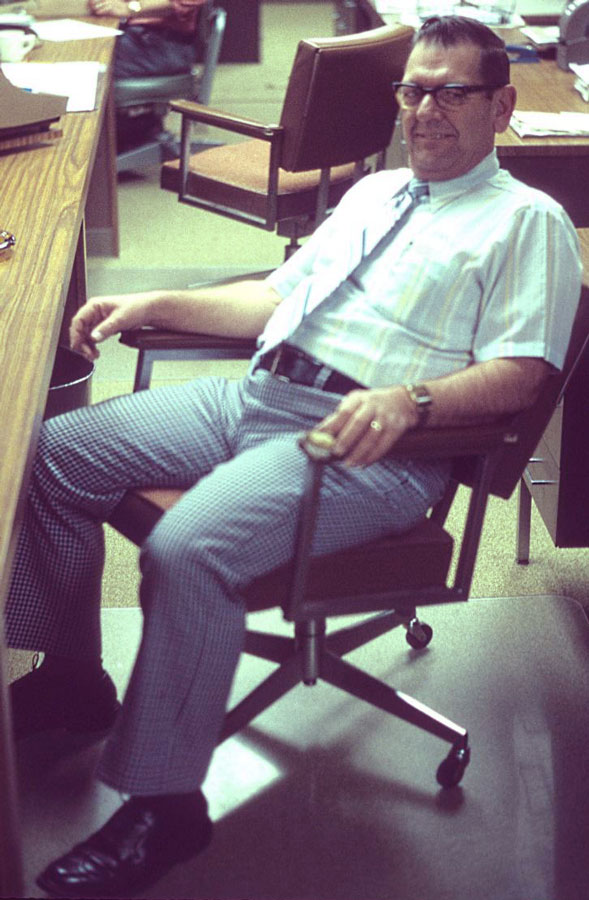
Around mid- May 1971, Blair Thompson said that he planned to apply to the Chesapeake & Ohio (C&O) as a summer agent-operator. He was in his third year at the University of Virginia in Charlottesville as was I and interested in railroad history. He was hitch-hiking on a road from Keswick to Gordonsville and was given a ride by Frank Schumaker, Assistant Train Master, Piedmont Sub-Division. Mr. Schumaker mentioned that there were few on the agent-operator extra board and that summer help would be considered if the person qualified on the operating rules. Since I had prior experience, I visited Mr. Schmaker at his office on the second floor of Charlottesville’s Main Street station. He loaned an operating rule book which I studied; much of it was identical to the RF&P operating rules that I had learned a couple of years earlier. After a week, I returned and Mr. Schumaker gave me an oral examination on the rules.
After passing muster with Mr. Schumaker, I rode a train to Main Street Station in Richmond and met James L. “Jim” Pickett, Chief Train Dispatcher, where I filled out an application. I stated that I wanted to learn G Cabin’s operation at Gordonsville, Virginia, so he approved my posting for the job.
I had visited the tower once a few months earlier and met the daylight operator, Kenneth Steven “Kenny” Williams, so I was aware that it had a Union Switch and Signal (US&S) Centralized Traffic Control (CTC) machine covering the trackage from the East End of Charlottesville Yard (the boundary between the Clifton Forge and Richmond Divisions) through Gordonsville and up to the junction with the Southern Railway at Orange. After the beginning of summer break for UVA, I rented a bed in a boarding house near Gordonsville circle where US Highways 15 and 33 intersected. I posted during daylight hours with Kenny during weekdays and with Howard A. “Buddy” Mahanes during the weekends. Aside from learning train movements, I met the other regular operators on second and third tricks: Lewis M. Patterson, Percy D. Heath, as well as other relief operators: King Joseph Tardiff and “Pat” Patterson.
With only limited railroad experience, my perception was that my work would be like that on the RF&P, working at only one tower. I didn’t have a car and thought I would live in Gordonsville during the summer, staying at the boarding house about a quarter-mile from the tower. However, after I qualified on G Cabin, Jim Pickett suggested that I go to Mineral, Virginia and learn agency work. Mineral was very active because it handled the non-agency siding at Frederick Hall which is where the Virginia Electric and Power spur left the main line to the North Anna nuclear power station that was under construction. At that location, there were two set-out tracks; one for loaded cars being delivered to the construction site, while the other was for outbound empties. A former Washington Terminal ALCO switcher operated by a Brown and Root contractor crew performed the six-mile shuttle through the woods between the siding and construction site.
I stayed at Mineral for a few days with overnight at a boarding house owned by Steve Thruston, who coincidentally was the station agent-operator. Both the Gordonsville and Mineral boarding houses were occupied by North Anna Power Station construction personnel.
Steve was a good teacher and showed the basics of daily agency work which included preparing bills of lading, sending freight invoice copies to the zone accounting bureau, preparing car orders, making blind siding reports, as well as updating average or straight demurrage records. Preparing a switch list for local freight crews and filing waybill copies were also covered.
Prior to the end of the week, Jim Pickett advised that I was needed to work the following week at Beaverdam. That was my first alone-assignment, and much different than my original thought of working at Gordonsville all summer. I was there from Monday through Friday to relieve Hunter E. Miller. I slept in the waiting room on a bench and ate canned food from a local store. There was a guidelines list prepared by Hunter with a sequence of things to do daily, all of which were familiar from understudying at Mineral a week earlier. One of these was the post office lock box combination to pick up mail, since there was no Railroad Business Mail delivered by passenger baggage-masters. July 1, 1971, was mid-week and when I went to the post office, I learned that it was the first day of the U.S. Postal Service. A postage stamp and cachet envelope were available to mark the occasion; every post office was a first day of issue site. I paid for a couple of stamps with the Beaverdam, Virginia, canceling machine postmark.
That week at Beaverdam marked the beginning of my three summers as a relief agent operator. My recollections associated with each location on the Richmond Division follows.
Washington Sub-Division
Shadwell, Keswick, Gordonsville Freight Room, Madison Run, and Orange
I bought thirty-three cents-per-gallon regular—before there was such a thing as unleaded—gasoline at a Union 76 distributor at Shadwell. The Shadwell depot adjoined the fuel company property and was being used for storage.
The cinderblock Keswick station had been a retail store named the “Hen House Depot,” but was defunct with doors open by 1969. The brick Keswick station remained along the old alignment in that village and was used as the police department or another community purpose.
The C&O Signal Maintainers used the former Gordonsville freight house that was alongside the east side of the wye.
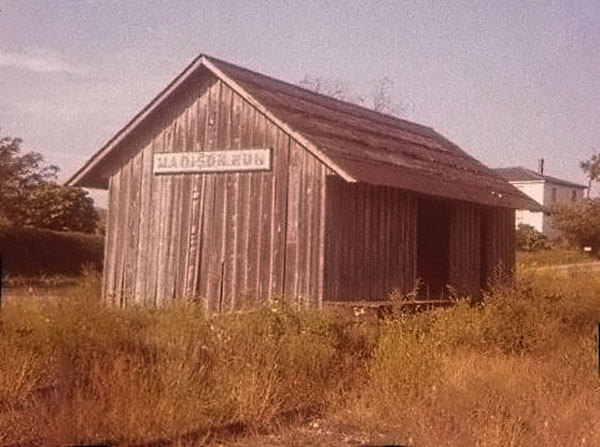
Madison Run was a small freight-room only building for less-than-carload (LCL) freight. It appeared derelict but was still standing. Local lore was that as a condition for building the right-of-way through that property, the C&O agreed to always allow passenger trains to stop at that location upon request. That was likely forgotten by the 1960s, if not decades before.
Orange, Virginia, was the junction at which C&O passenger and freight trains operated over tracking rights to Potomac Yard at Alexandria, Virginia, and Washington Terminal, District of Columbia. G Cabin would “OS” trains heading northbound to the Southern daylight operator at Orange. Southbound freight trains would be announced to G Cabin via the block line but scheduled passenger trains were not. During the summers that I worked, the southbound home signal from the Southern at Orange would be lined up about fifteen minutes prior to scheduled passing at Orange. The Southern dispatcher at Greensboro, North Carolina, controlled the mainline turnout from the Southern to the C&O trackage. For Train 2, when on time, the G Cabin operator lined up the route from Gordonsville to Orange, but the northbound home signal at Orange interlocking was controlled by the Southern Dispatcher.
Although Orange was a train order office, the Southern Railway had centralized traffic control between Monroe and CR Tower at Alexandria. Consequently, Southern Railway trains rarely received clearance cards and orders in either direction. I expect that northbound C&O trains only operated on signal indication without a clearance card, but never pondered this topic until writing these recollections.
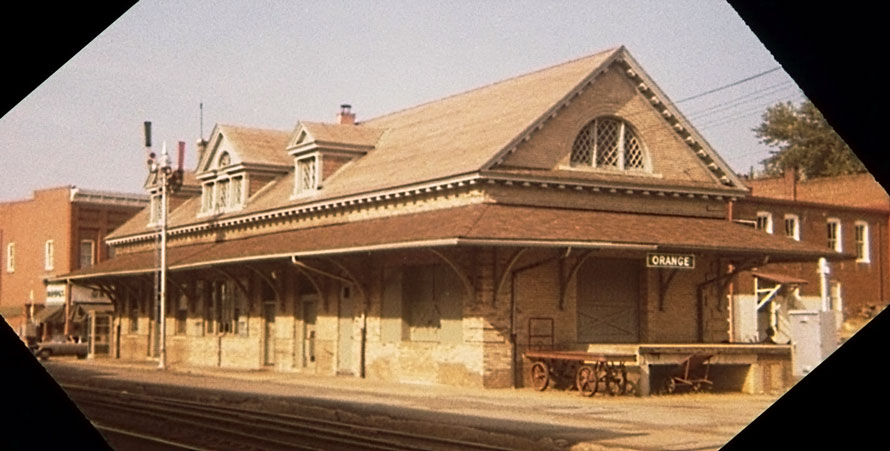
Orange was a C&O flag stop. Westbound passenger trains paused to pick up passengers traveling west of Charlottesville. Eastbound trains only discharged passengers from west of Charlottesville.
In 1969 when I hiked from Charlottesville to Orange along the C&O, I was not aware of this requirement and Train 1 arrived after the agency was closed. I flagged the train as it approached, but when the conductor sold me a fare to Charlottesville, he said I had better not do it again in the future. I heeded his advice –and would have surprised myself if I had known that I would be working for the C&O two years later.
Dr. Frank R. Scheer – Photographs and text Copyright 2018
Join us next month for Part Two of this Three-Part story, which will cover the Chesapeake & Ohio Piedmont Subdivision.
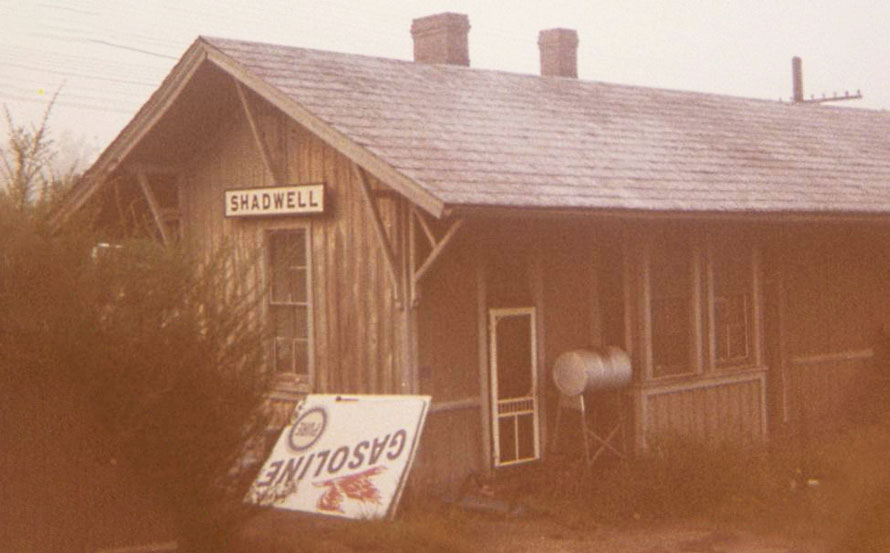
Great piece enjoyed read
Great story. You had a very interesting start looking forward to the other parts. I’m sure other people reading this that worked on the railroad can relate.
Excellent reading. I thoroughly enjoyed it.
Wonderful story about how the combination of luck and initiative resulted in landing a good job with the railroad. So many of us had similar experiences that offered the chance to learn railroading, and the many lessons it taught, and be well paid doing it. Looking forward to the next installments. Thanks for the memories.